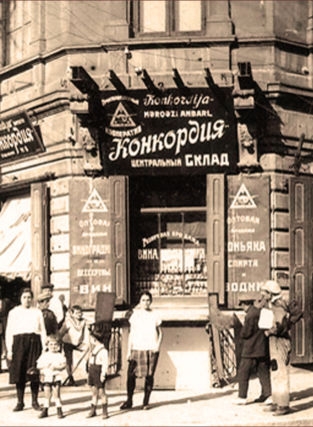On Easter Tuesday in 1819, nearly a year and a half after leaving their native land, German settlers from Schwaben (Stuttgart, Ulm and Reutlingen in Southern Germany) arrived in Azerbaijan – to a small town that was afterwards named as Helenendorf. The local government required that newcomers should be good craftsmen or farmers, specializing either in wine growing, silk production or cattle breeding.
In Helenendorf, the first Germans engaged in winemaking were the Hummel and Vohrer families. The members of these families would become the founders and managers of a unity of winemakers “Concordia”, as well as would greatly contribute to the life of the German colonies of the Transcaucasia.
The story of the both families is impressive. In 1846 Christopher Vohrer planted a vineyard on his land and selected the type of grapes to cultivate, taking into account the conditions of climate and soil. Obviously, he was successful, because in 1856 the French silk traders praised Vorher's wine while passing through the nearby town of Shaki. As an entrepreneur, he had founded a joint stock company as early as 1862 and created a family company known as "Christopher Vohrer and Brothers". Almost 30 years later, the 65-year-old Christopher passed the company on to his sons. The “Vohrer Brothers” company has been selling 350,000 liters of wine annually. At the end of the XIX century, wines produced in the enterprise were exported to Germany and the Netherlands, and it was the first company in history exporting wine from Azerbaijan to Europe. By the time World War II broke out, the company also owned several brandy, cognac breweries, wine distilleries, a water mill, a brewery and a stud farm.
By 1895 the Hummel family had established a crafts company. They also planted vineyards and set up a wine cellar to distribute wines from Baku to Tbilisi. The Baku-Tbilisi Railway further facilitated their commercial success. Large wood and stone barrels which were lined with glass, as well as press and cooling systems, also led to the improvement in the taste of the wine.
“Concordia” cooperative founded in 1922 based on the Vohrer and Hummel families’ business at Goygol Wine Plant was the largest wine-making farm at that time in the Caucasus region, producing wine, cognac, and vodka. At that time, most of the wine products produced in Azerbaijan accounted for Goygol Wine Plant, while only four enterprises in the Russian Empire have been producing champagne using classic French technology, and Goygol Wine Plant was one of them.
During Soviet Union time, “Concordia” cooperative renamed to "Khanlar Agroindustry" combine, specializing in the production of wine and cognac accounted for 7% of the total production in the Union. After the 1985 Decree “On Alcoholism and Anti-Drinking”, and as a result of non-farming, the plant was demolished.
Now the company is a modern winery, combining classic technology and the latest technical achievements. At present, all production buildings, shops, and auxiliary fields have been reconstructed and repaired; all equipment and technological lines have been renewed and replaced with modern ones. Today the Goygol wines combine ancient history, great traditions, classic recipe and modern technologies, which make it unique.




